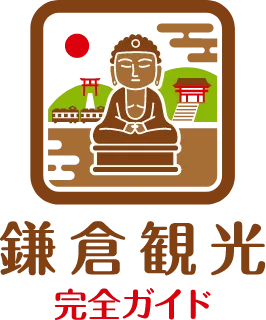Kencho-ji Temple (建長寺)
Discover Kencho-ji Temple (建長寺)
Kencho-ji Temple (建長寺) was established in the mid-13th century by Tokiyori Hojo, the fifth regent of the Kamakura shogunate. It holds the distinction of being Japan’s first official Zen training monastery. The temple’s founding abbot was Lanxi Daolong, a Zen monk invited from the Southern Song Dynasty in China. As the head temple of the Kencho-ji school of the Rinzai sect, it ranks first among the Five Great Zen Temples of Kamakura.
The temple was originally built on the site of a former execution ground called “Jigokudani” (Hell Valley), where a Jizo Bodhisattva temple once stood. This history lives on in Kencho-ji’s enduring spirit of compassion, reflecting the Zen philosophy that “all beings can be saved.”
Highlights of Architecture, Nature, and Scenery
Upon entering, visitors are greeted by towering 760-year-old Chinese juniper trees (byakushin), said to have been brought from Song China by Lanxi Daolong himself.
The massive Sanmon Gate (Gate of the Three Liberations) is the largest of its kind in eastern Japan. Passing through symbolizes liberation from earthly desires.
The temple’s national treasure bell, cast in the mid-13th century, is one of the “Three Great Bells of Kamakura.” Don’t miss the awe-inspiring ceiling painting of a five-clawed dragon by artist Junsho Koizumi in the Hatto (Dharma Hall).
The Hojo Garden is a designated national scenic site, showcasing the spirit of Chinese Zen gardens with its pond-centered layout, manicured lawn, and carefully placed stones.
Cultural Significance and Blessings
Kencho-ji enshrines Hansobo Daigongen, a guardian deity believed to protect against fire and misfortune and to invite good fortune. A path of 12 Tengu statues leads up to the viewpoint, from which visitors can see Kamakura city, Sagami Bay, and even Mt. Fuji on clear days.
Local Cuisine and Zen Experiences
The famous Kenchin-jiru soup, a hearty vegetable stew, originated here. Visitors can also take part in free zazen (Zen meditation) sessions on Fridays and Saturdays, or join daily sutra-copying sessions (with a small fee). Both activities offer peaceful, contemplative experiences without the need for prior reservation. The on-site café Tenshin-an serves authentic Kenchin-jiru.
Omikuji, Goshuin, and Temple Customs
Weekly zazen sessions are beginner-friendly and do not require advance booking. Daily sutra-copying sessions are open throughout the day. Goshuin (temple stamps) are available from major temple buildings, including the Karamon Gate and Butsuden (Main Hall).
How to Get There from Tosh’s Place (トシズプレイス)
Kencho-ji Temple is about a 15-minute walk from JR Kita-Kamakura Station. From Tosh’s Place, it’s an easy and pleasant stroll, especially during the quiet hours of early morning or late afternoon. Opening hours are 8:30 AM to 4:30 PM. Note that the Butsuden is undergoing restoration until autumn 2027, which may limit access to certain areas.
Best Time to Visit
- Morning: The temple path and gardens are serene and bathed in gentle light—ideal for an early walk before breakfast.
- Late Afternoon: After the day-trippers leave, the temple becomes a tranquil space for reflection and spiritual practice—perfect for those staying nearby.
- Seasonal Views: Cherry blossoms in spring, peonies in early summer, and vivid autumn foliage provide colorful highlights. During peony season, even normally restricted paths are opened to the public.
Nearby Highlights Within Walking Distance
- Hansobo Shrine: A scenic overlook and spiritual guardian spot.
- Short Hiking Trails: Behind the temple, peaceful woodland paths offer a nature-rich Kamakura experience.
- Mushi-zuka (Insect Memorial): A modern art piece designed by architect Kengo Kuma, conceived by Takeshi Yoro. Held every June 4th, a ceremony honors insects in a unique cultural tradition.
Ideal For…
- Zen Seekers: Experience the calm of early mornings and peaceful evenings with zazen and sutra-copying.
- History & Architecture Buffs: Admire the Rinzai Zen architecture, national treasure bell, dragon painting, and ornate gates.
- Modern Art Enthusiasts: Be surprised and inspired by unique installations like the Mushi-zuka memorial.
Wrap-Up: Zen in Motion with Freedom and Depth
Kencho-ji Temple, the top-ranked of Kamakura’s Five Great Zen Temples, offers deep spiritual and historical immersion. Early morning walks, quiet twilight visits, and open-access meditation or sutra-copying experiences create a meaningful addition to any journey. Make the most of your free hours by slowing down and savoring the temple’s calm gardens and centuries of tradition.ith clarity.
